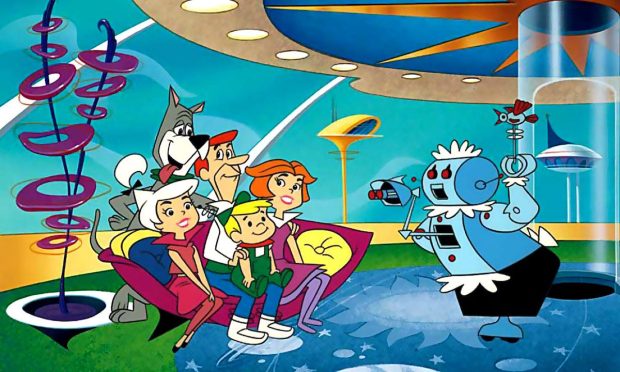The Jetsons Had It (Mostly) Right, With the Glaring Exception of Payments

Fans of Peloton stationary cycles and treadmills from certain demographics may have found themselves on lockdown, plodding along, when the line “Jane! Stop this crazy thing!” passed through their minds.
What were they thinking?
George Jetson. They were thinking about George Jetson, futuristic fitness fan and cartoon character who arguably kicked off the treadmill craze in 1962 when “The Jetsons” premiered.
As a look at our digital-first life says to anyone familiar with “Nick at Nite” or streaming TV, it made quite an impression. Not unlike “Star Trek,” another show that affected our digital life more than we may realize by inspiring the Steve Jobses of the world to create cool hand-held communicators — we call them “smartphones” because it’s not the future yet — revisiting “The Jetsons” yields valuable clues as to where the connected economy is headed.
For starters, it was the first TV show broadcast in color. Younger readers might not know this, but everything was black and white before that. Sky, ocean, land — all of it.
Don’t believe us? Ask your grandparents to break out their old photo albums. Color was later applied to photographs and paintings in a top-secret worldwide, cross-government initiative that won’t be declassified until 2062 — when “The Jetsons” is purportedly set.
How about robots? Can’t discuss “The Jetsons” without talking about Rosey the Robot. A distant cousin of Robbie the Robot of “Forbidden Planet” fame (later recycled for “Lost In Space”), Rosey clearly used a highly advanced artificial intelligence (AI) as she whizzed around the family’s sky house on a single wheel, making the occasional wisecrack at those silly humans.
We recently had this experience with a robot delivering our curbside order at a business that shall remain nameless. We forgot to say “thank you” — and it vaporized half of the order with a laser beam. Are they supposed to do that? We’ll be more considerate next time (or else).
They had a dog — Astro — but he seemed normal, except for the fact that he could talk.
It almost goes without saying that much is automated in the Jetsons’ world. They basically have a 3D printer as an oven. Oh, and digital AI-assisted healthcare. In one episode, George’s doctor has him swallow a camera pill. We caught up to that in 2004, so take THAT, future.
This family from the future didn’t drive an autonomous car. Theirs could fly. And guess what? It’s happening. Like the smartphone/communicator situation we mentioned, the BBC reported last summer that AirCar made its maiden flight. Very cool. Jane Jetson would love this thing.
Of course, the Jetsons’ car folded up into a briefcase when not in use. We’ll get there.
We give the smartwatch innovators of recent years all props, but George J. had one in 1963. We remember the episode where his boss is yelling at him via this technology. Check it off the list. Same with space tourism, which we have also achieved ahead schedule.
Is there any connected trend “The Jetsons” didn’t predict in animated fashion? Yes. Payments.
How embarrassing. In the opening credits of the show, George is seen handing his wife Jane … paper cash from a regular wallet (collective gasp). Nary a credit card or crypto token in sight. Recall that Diner’s Club was launched in 1950 and American Express in 1958. There’s no excuse.
We’ll chalk it up to lack of imagination and leave it at that.
Besides, we have no idea what Jetson kids Elroy and Judy were up to on whatever computing devices were at their cartoonish disposal. We know they’re not working in flying cars, video watches or robots, so let’s be optimistic and hope they’re teaming up on digital payments.
Paper money in 2062? Honestly, George. No wonder Mr. Spacely was always scowling.
